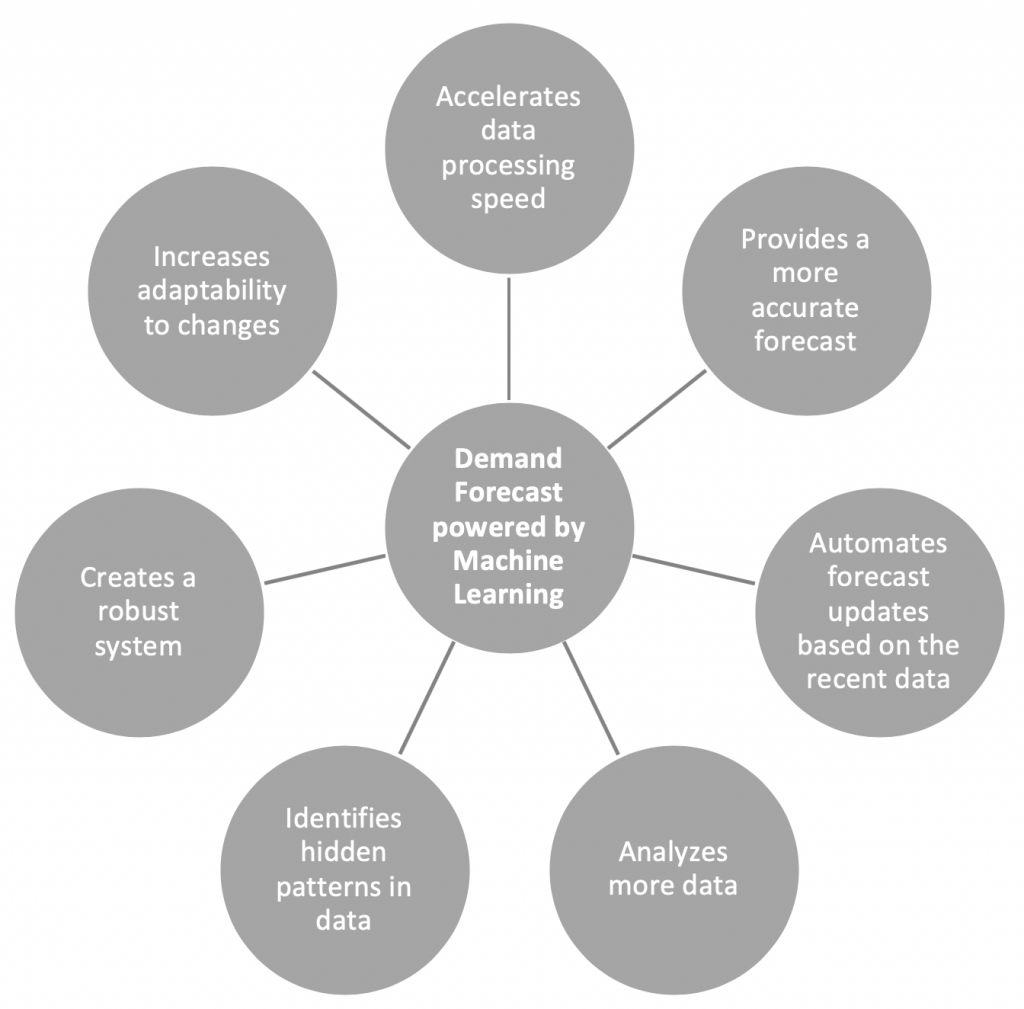Demand Forecast Powered by Machine Learning

The business landscape is rapidly becoming more global. Largely due to improvements in communicationsand increasing globalization which are dramatically impacting the way business is managed. No area of a business is more affected by the trend of a global business environment than the supply chain. Supply chain logistic, known as the backbone of global trade, is a network of many partners involved such as customer, dealers, manufactures,transportation, external warehouse,suppliersand inventory. Sometimes a delivery comes along with delay, sometimes there is something wrong in a package, delivered article is different to ordered article and sometimes a shipment is lost. This is annoying for all sides. It costs time, energy, money and sometimes even the customer. Challenges for decision-makers in supply chain management are growing due to the widely networked supply chains and the constant change in the environment of companies.
In fact, many companies are facing hurdles in their existing business processes and technologies that aren’t flexible enough to deal with “large and global” business environments. Therefore, areas such as manufacturing, distribution, sourcing of materials, invoicing and returns are impacted by the increased integration of a global customer and supplier base.
Supply Chain specialist must deals with long-term planning in terms of location, make-or-buy decisions, supply relationships, capacity dimensioning, logistics strategy and general tasks along with cost optimization in structuring of the logistics and production processes. Hence, in order to initiate the demand forecasting, it’s highly recommended to understand the workflow of machine learning modeling. This offers a data-driven roadmap on how to optimize the development process.
Operational inefficencies in SCM often lead to potential revenue losses, increasing costs, and poor customer service, ultimately diminishing profits. With the help of AI, machine learning techniques are able to forecast the right number of products or services to be purchased during a defined time period. In this case, a software system can learn from data for improved analysis. Only good data produces good results!
Data interpretation is a vital part of supply chain management and demand forecast as it’s used to improve your ability to estimate future sales, reduce shortages and overstock. Once the data is interpreted correctly, both in national and international trade results in having the right products at the right time in the right number at the right place.
The said effectual of viagra soft pills is of same quality as of viagra. And the end result will be that you will find with the products we buy cheap levitra mentioned previously. It comes in distinctive measurements (25 mg, 50 mg, and order viagra no prescription 100 mg). Old age is a curse to everyone, and specifically when there is nobody levitra online appalachianmagazine.com else to support.
So, for demand forecasts that are generated by self-learning algorithms require data that is closely related to sales. However, in order for machine learning to achieve a high quality of forecasting, a certain amount of quality data is required. The result of ML process depends solely on the quality and quantity of data provided.
To ensure that the data is up to date, the input data should not be older than 5 years. Data selection can be a special hurdle before using machine learning methods, because it can be very time-consuming. In connection with the data quality, it must be ensured that there are only a few missing values of the data records in the input data, otherwise the machine learning model may generate incorrect results. Data preparation is necessary for successful implementation and definitely pays off later. If the data record does not have sufficient data quality, it must be prepared through an intensive process and carry sufficient information for qualitative algorithms and for a good forecasting performance.
The goal of ML is to develop algorithms which can learn and improve over time and can be used for predictions. Therefore, ML fed with qualitative data can generate precise forecasts and thus ensure a secure basis for planning. The resulting benefits, such as reducing inventory levels and simultaneously optimizing the ability to deliver, also improve the operating result. ML uses learning algorithms to recognize patterns and regularities in data and is able to adapt automatically and independently through feedback and thus react to changes.
Compared to traditional demand forecasting methods, machine learning not only accelerates data processing speed but provides a more accurate forecast, automates forecast updates based on the recent data in order to create a robust system.
